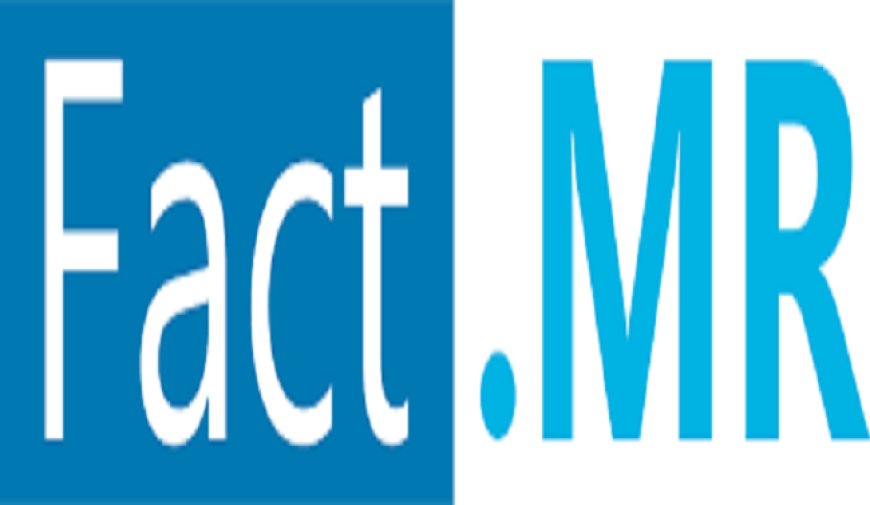Maternal Nutrition Products Market Size, Demand & Growth Analysis by Fact MR
The global maternal nutrition products market (모성 영양 제품 시장), currently valued at US$ 21 billion in 2023, is projected to expand at a CAGR of 5.2%, reaching US$ 35 billion by 2033.

The global maternal nutrition products market (모성 영양 제품 시장), currently valued at US$ 21 billion in 2023, is projected to expand at a CAGR of 5.2%, reaching US$ 35 billion by 2033.
The maternal nutrition products market has seen substantial growth in recent years, driven by increasing awareness of the critical role that nutrition plays in maternal and fetal health. Maternal nutrition products are specially formulated to meet the unique nutritional needs of women before, during, and after pregnancy. These products encompass a wide range of supplements, including prenatal vitamins, minerals, proteins, and omega-3 fatty acids, as well as functional foods and beverages designed to support maternal health.
Importance of Maternal Nutrition
Maternal nutrition is crucial for the health and well-being of both the mother and the developing fetus. Proper nutrition during pregnancy supports the growth and development of the fetus, reduces the risk of birth defects, and enhances maternal health outcomes. Nutritional deficiencies during pregnancy can lead to serious complications such as anemia, preeclampsia, and gestational diabetes, as well as long-term health issues for the child, including low birth weight and developmental delays.
Market Drivers
One of the primary drivers of the maternal nutrition products market is the increasing awareness and education about the importance of maternal nutrition. Health organizations and governments around the world are actively promoting the benefits of proper nutrition during pregnancy through campaigns, guidelines, and educational programs. This has led to greater consumer awareness and a rising demand for specialized maternal nutrition products.
The rising prevalence of nutritional deficiencies among pregnant women, especially in developing regions, is another significant factor driving the market. Deficiencies in key nutrients such as iron, folic acid, calcium, and vitamin D are common among pregnant women and can have severe consequences for both mother and child. The growing recognition of these deficiencies has led to increased consumption of maternal nutrition supplements to ensure adequate nutrient intake.
The trend towards health-consciousness and proactive health management is also contributing to the growth of the maternal nutrition products market. Expectant mothers are increasingly seeking out products that can help them maintain optimal health and support the healthy development of their babies. This shift in consumer behavior is reflected in the rising demand for organic and natural maternal nutrition products, which are perceived as safer and healthier options.
List of Key Companies Profiled in The Report
- Danone
- Matsun Nutrition
- Pharmavite
- Rainbow Light
- New Chapter Inc.
- Vitamin Angels Inc.
- MegaFood
- Others
Country-wise Insights
The U.S. leads global healthcare spending per person and holds the largest market share, driven by higher local healthcare budgets. This robust spending capacity positions the U.S. as the backbone of the maternal nutrition products market. The availability of various brands online at different price points and pack sizes further boosts demand. In Germany, demand for prenatal vitamin supplements is rising due to increased dietary supplement use and access to high-quality products. Growing awareness of maternal health and care also contributes to market expansion.
In Japan, multivitamins are thriving thanks to strategic marketing by manufacturers. Additionally, Japan's growing population and pregnancy rates are expected to positively impact the maternal nutrition products market. The wide availability of raw materials enhances product supply, shifting the demand curve and reducing prices due to economies of density and transportation. Favorable policies, including subsidies and incentives, also support this growth dynamic.
Challenges and Opportunities
One of the challenges faced by the maternal nutrition products market is the stringent regulatory environment. Manufacturers must navigate complex regulations and ensure compliance with safety and quality standards, which can be time-consuming and costly. However, regulatory compliance is crucial to gaining consumer trust and ensuring product safety.
Innovation and product development present significant opportunities for market growth. Companies are investing in research and development to create new and improved maternal nutrition products that cater to the evolving needs of consumers. Innovations in formulation, such as the inclusion of probiotics and plant-based ingredients, are driving product differentiation and attracting health-conscious consumers.
Competitive Landscape
Manufacturers of maternal nutrition products are exploring innovative technologies to meet the rising consumer demand for nutritious options. Leading producers are developing new supplement variations free from chemical additives.
Key market participants are enhancing their online presence, utilizing effective marketing strategies and strong social media engagement to boost revenue.
For example, in 2021, Trimacare introduced a prenatal supplement designed to meet the nutritional needs of both mother and baby during each trimester, providing trimester-specific care and supporting overall development.
Key Segments of Maternal Nutrition Products Industry Research
The maternal nutrition products industry is segmented by type, including multivitamins, essential fatty acids, minerals, and other nutrients. These products come in various forms such as tablets, capsules, powder, and gummies. Distribution channels for these products include modern trade outlets, specialty stores, online retailers, and pharmacies, with additional channels categorized as others. Geographically, the market is divided into North America, Europe, Asia Pacific, Latin America, and the Middle East & Africa. This segmentation helps in understanding the diverse consumer needs and preferences across different regions and distribution platforms.












